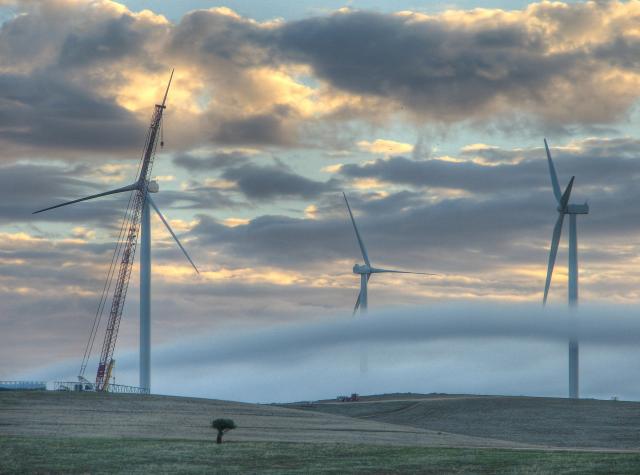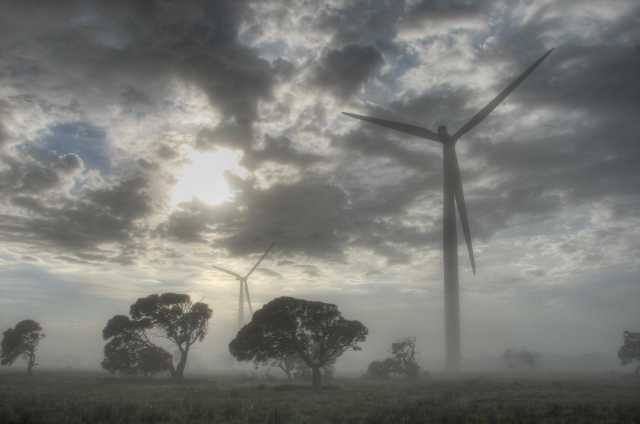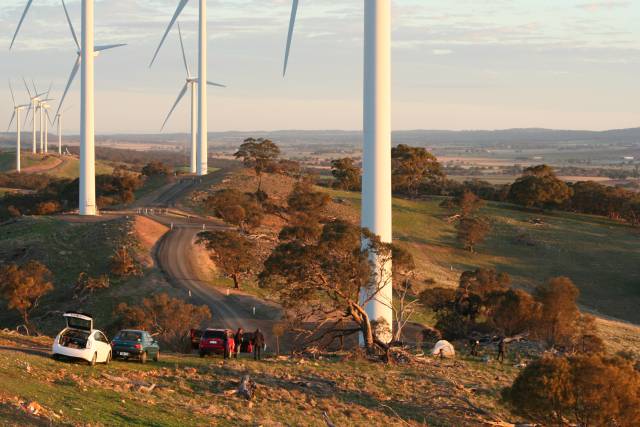Capacity factors
|
"Fact check me if you like but the best average output of these things I have ever seen is 27%."Here Pete North, who, to judge by the tone of the writing on the page, seems to be in charge of the site, was writing about the capacity factor of wind farms. Plainly he is woefully ill-informed because, not just one wind farm, but the weighted average capacity factor of all Australia's wind farms at the end of 2012 was greater than 34%. Several achieved 40% or better.
Of course the wind doesn't blow all the time. No reasonable person would expect a wind turbine to generate at its full power all the time. The key points are that they generate with no greenhouse gas production and they generated electricity cheaply.
Rare earth minerals
|
At least some wind turbines, and a great many other industries, use magnets based on a group of elements called rare earths; the mining of rare earth minerals in China seems to have been carried out with little concern for environmental damage. Much of the world's rare earths come from China, see the Guardian Weekly for a description of some of the environmental damage there.
The graph on the right shows the major uses of rare earth elements in the USA. Note that wind turbines do not even rate a mention; the magnets used in wind turbines (and in a myriad of other uses) would probably come under the 'Other' group on the graph. Uses in the rest of the world would be similar.
Discussions on the uses of rare earths are given at
BBC and
Geology.com.
The wind blows in some areas when it is not blowing in other areas
On the Wind Energy's Absurd blogspot is a piece that says that the UK is prone to periods when the wind is not blowing anywhere.
|
|
Turbine blades falling off
|
Wind turbine blades have been known to fail and break apart. This can result in pieces flying several hundred metres when the failure was caused by the turbine rotating at very high speed when its control mechanisms failed during a high wind.
The break-up of a rotating turbine is an extremely rare event. It has never happened in Australia (as of January 2017). An anti-wind power Net site (Caithness Windfarm Information Forum) in 2013 recorded an average of about 20 blade-failure events per year world-wide (not necessarily in utility scale wind turbines and the blades did not necessarily fall off). At the time there were several hundred thousand utility scale wind turbines in the world. Assuming that all 20 blade failure events recorded by Caithness were in utility scale turbines, and assuming 250,000 turbines total we can calculate a probability of one turbine in 12 000 suffering from blade failure in any one year. That is, a probability of blade failure in a particular turbine of 0.00008 in any one year, or 0.0000002 on any particular day.
While it seems that no one has yet been injured by a blade or piece of a blade thrown from a utility-scale wind turbine, considering that there are several hundred thousand utility scale wind turbines in the world it is quite probable that it will happen some time.
Compare this theoretical danger, someone might die sometime, with the very real risk posed by the burning of coal. The air pollution from the burning of coal kills millions of people world-wide each year. Wind turbines save lives by replacing coal fired power stations. Follow the link to read a World Health Organisation publication that puts the number of deaths from air pollution at seven million per year; much of this pollution is due to burning coal.
The image of a wind turbine blade falling off and killing someone is easy to imagine and might be frightening. This type of scaremongering, while making no attempt to place the risk in any sort of perspective, is common among those who are trying to get a message across without any concern for the truth.
A book I can recommend on this sort of psychological trickery is The Science
of Fear: How the Culture of Fear Manipulates Your Brain, by Daniel Gardner.
Turbine noise
|
This is a subject that has been done to death in Australia and has moved me to write a page on the subject.
As I wrote on that page, better than reading pages like these, if you want to know how much sound wind turbines produce go and visit a wind farm, listen from various distances, make up your own mind.
Better again, visit on a number of occasions under different wind conditions, camp overnight nearby; fully experience being close to wind turbines, as I have done many times.



